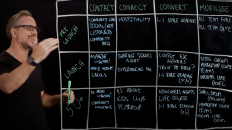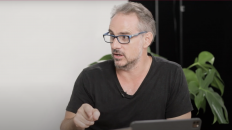Greetings, one and all. Glad you could join us again for more potted wisdom that aims to grow your church-plant ministry. What you're about to read is only one gem from the treasure-trove of experienced advice contained within our most recent Planter Session. If you haven't yet taken in “Lessons from Mother-Daughter Church Planting” with Paul Harrington (Rector, Holy Trinity, Adelaide) and Clayton Fopp (Senior Pastor, Holy Trinity, Mount Barker), click here to check out the entire Planter Session.
During their wide-ranging discussion about what the Trinity network of seven churches and 13 congregation has learned from its mother-daughter planting, Paul reflected on why it took nine years for Holy Trinity to plant its first church. Since that initial daughter was birthed, the growing Trinity network has gone on to plant a new church every two years or so (including the recent great grand-daughter church plant at Victor Harbor).
“We're a church that had never done it before,” said Paul. “We were in a denominational network that didn't exactly encourage it. Both because of the Adelaide context being quite a liberal church context – and we're evangelical – and also because in the 1990s, Anglicans didn't plant in other people's parishes. That was the mindset.” But Paul and his leadership team were committed to what became a burgeoning model of church planting.
Persistence for the gospel
For any established churches that are looking to plant a daughter church, Holy Trinity's perseverance and long-term thinking could provide a profound framework. “It took a while to get the congregation on board, in terms of planting,” Paul explained. “To get us to a point where we understood why we were doing it – to reach others with the gospel. To prepare them for the flak that we'd cop. And then to put in the training and thinking behind planting the first time.
“We needed to be patient because it was a big, significant change. Also, I was very aware that if we didn't prepare well – if the first-up plant struggled – we'd find it very hard to back up and do it again.”
Power of networking
Patience, planning and preparation proved to pay off for Holy Trinity and its daughters. Clayton leads one of Trinity's daughter churches, and added that the increased size of their family has helped to “speed up” the church-planting process.
“As our network has grown to seven churches, we are able to do more as a network than the churches can do individually. I think that's also contributed to the speeding up of the church planting. The shared vision for planting in the network has helped us increase the pace, in God's kindness.”
Church planting DNA
However, increased speed doesn't equal decreased patience, planning or preparation. Instead, these key components are ingrained within the fabric of each Trinity church. “We also were keen to plant churches that plant churches,” explained Paul about what has been consistent within the Trinity network, since its inception.
“We want that to be our DNA. So now we're in a context where we're trying to get all seven churches planting and thinking about how they can do that, on a regular basis. And the grand-daughter church to have the same mindset. That's easier said than done, but that's what we're trying to do.”
To view the full “Lessons From Mother-Daughter Church Planting” session, click here.
To register for the next Planter Session – “The A-Z of Assessment” – click here.
– Ed.



